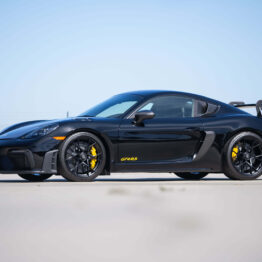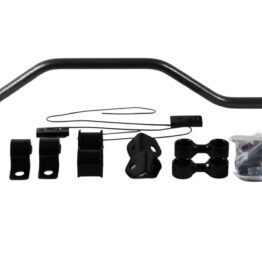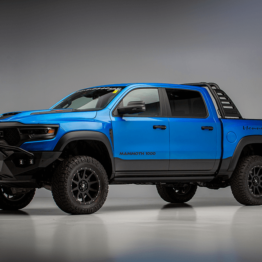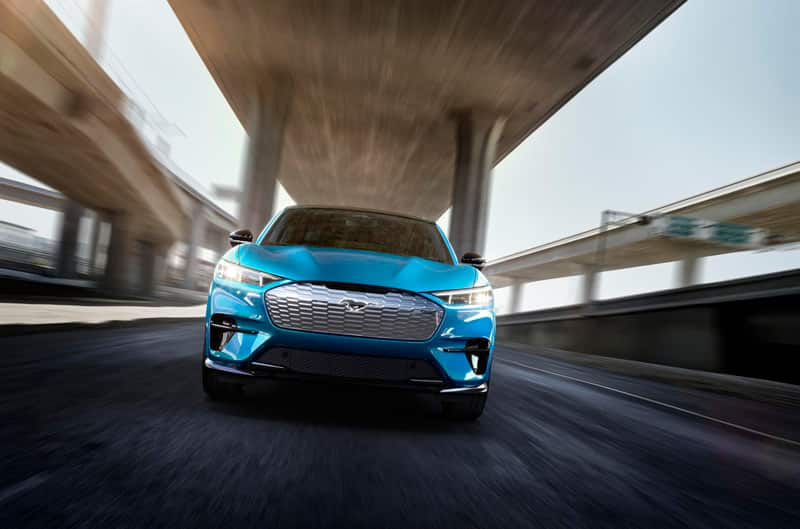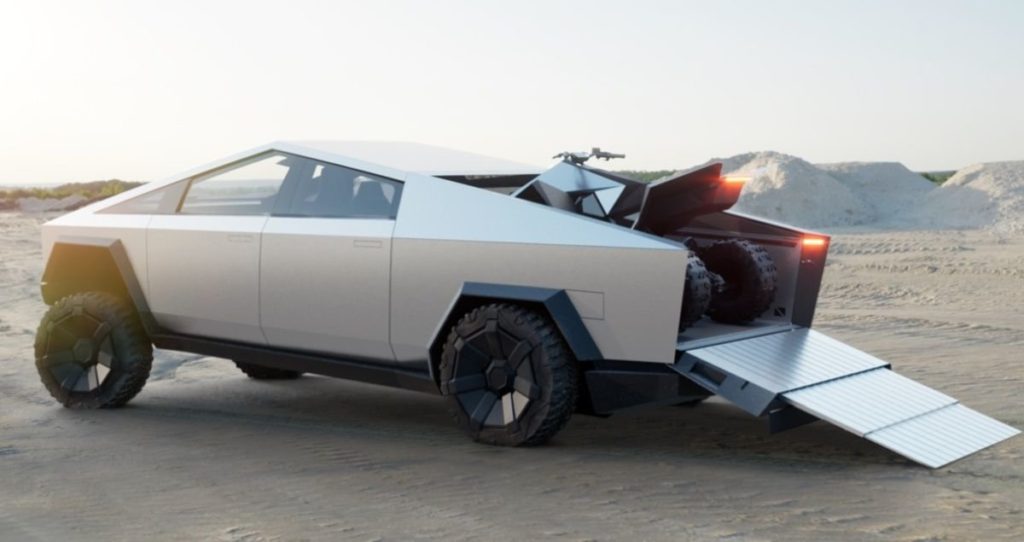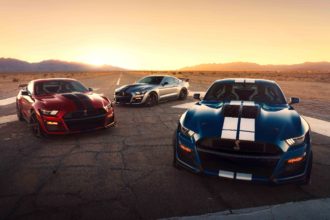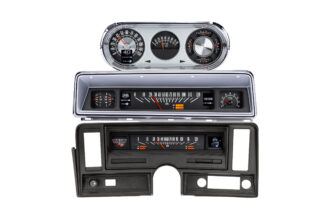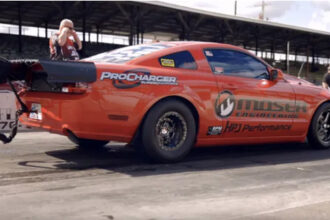Electric Cars Are Creeping Into the Market — How Will We Adapt?
Wow — what a difference a year can make. In the last several months the automotive landscape has changed drastically. Ford unveiled an electric Mustang at the SEMA Show, announced an electric crossover called the Mustang Mach-E shortly thereafter, and Elon Musk unveiled his company’s first pickup truck. General Motors had shifted its workforce around, unveiled electric motor transplant kits at SEMA, and have announced the death of the Chevy Cruze and Impala, Buick Regal — as well as a few others, including the CTS, Cadillac’s halo sport sedan since 2003.
This past year has been a wild ride, and some are wondering what the new decade will bring. I’m no futurist and I don’t have a crystal ball laying around my shop anywhere, but it’s safe to say that the industry, as a whole, is about to change quite rapidly. First, General Motors is taking the electric vehicle (EV) very seriously. In fact, they had announced earlier in the year that by 2030, but probably sooner, everything rolling off of their assembly lines will be fully-electric. To put it clearly, that means no more gasoline or diesel powered vehicles from anything in their lineup. While some insiders say that will be only limited to the everyday, mass-produced vehicles, with the exception being the high-performance vehicles, I’m not so sure.
Electric Pony Cars, the Mustang Crossover EV, the Death of the Sedan and… Cybertruck
Rumors of the Camaro dying (again) have surfaced, but the source based this prediction off of the prolonging of the current 6th-generation car. Apparently, the seventh-generation Camaro was set to be unleashed around the 2021-22 model year, but General Motors had extended the run into 2023. Any plans for the seventh-generation car was subsequently put on hold. The same source essentially suggested that the Camaro would die entirely after 2023, but in recent weeks, it’s become widespread again that the 7th-gen is indeed back on, but now it will be fully-electric.
This isn’t the first time Chevrolet has dabbled with an electric Camaro, with the e-COPO from the 2018 SEMA Show, nor is it the first time they’ve built an electric car. However, while I’m happy that the Camaro will live on, I’m not so sure how I feel about an electric Camaro. Or Mustang. Or an electric crossover SUV with “Mustang” written on it.
Speaking of, the response that vehicle has garnered hasn’t exactly been positive, with only a few exceptions that I’ve seen or read. Apparently, Ford plans to expand the Mustang family by adding the EV SUV, bearing the galloping horse and featuring the Mustang name. The general consensus of your average enthusiast is, that while the 469hp GT version is great, the car would have been better off had it been called simply, the Mach-E, without the actual Mustang name and nomenclature attached to it.
I agree, but me thinks Ford had intentionally done this for two reasons; one, it would set the internet on fire, creating millions in free publicity, and two, they’re using this particular vehicle to help pave the way for an electric pony car. For several years, automakers were doing everything they could to get their model’s MPGs up as high as possible, while creating impressive performance. Hence, the twin-turbo V6 Ford GT supercar — a departure from the original, large-bore, fuel guzzling, V8 monsters of yore. But now that electric and lithium battery technology has greatly improved in the last decade, we’re seeing a shift towards EVs in a big way.
Of course, Elon Musk’s car company’s popularity certainly helped.
Tesla has been extremely busy the last couple of years; announcing several new models, giving us a peak at what could be the next Roadster, and at one point, teased an electric semi. Now, they’re gearing up to build an electric pickup truck (and an electric ATV), to go directly after the Big Three’s current offerings. Why a truck? Because trucks are huge right now. In fact, trucks, SUVs and crossovers are absolutely killing it over traditional passenger cars.
They’re doing so well, that Ford has eliminated all coupes and sedans from their lineup, apart from the GT and the Mustang. The Fusion was initially planned to be axed, but evidently, got a lifeline as of late. Even the compacts like the Fiesta and Focus have been canceled here in the States. And now with the recent announcement of the Regal’s cancellation, Buick, will consist entirely of crossover SUVs. Weird, right? With the Cruze and the Impala gone, as well as the Volt, Sonic and maybe the Spark, the Malibu may be the only affordable, mainstream passenger car/sedan that you can get your hands on from the manufacture after 2020.
But back to Cybertruck…
With a botched unveiling, that included some weird ’80s synthwave and a man throwing a metal ball at the truck’s side windows, ultimately breaking them, there’s a lot to be desired here for me. The styling is straight out of Blade Runner, the overhang stretching from the cab to the connected bed restricts side loading and the ramp/tailgate is something I felt was a little half-baked. The interior is very minimalist, with Tesla’s trademark giant iPad attached to the waterfall of the dash to counsel in attendance.
Also in traditional Tesla fashion, the vehicle is quick, and eerily silent. The range isn’t terribly impressive, and one has to wonder how it will be effected when you’re hauling a heavy load and/or towing a vehicle behind it. Tesla’s supercharging stations aren’t as readily available, nor as fast-charging, as most Tesla owners would like. Unlike a traditional truck, with a cab and bed as two separate units, bolted to a frame, the Cybertruck features an endoskeleton, where the body itself makes up the truck’s rigidity. We used to call that unibody.
I get that Musk is trying to change the game, flip the script and take the truck into the 22nd Century, but there’a a very good reason why manufactures build trucks the way that they do, and have, for decades. You see, truck buyers are very unique individuals, with specific needs and a wide variety of tastes and requirements.
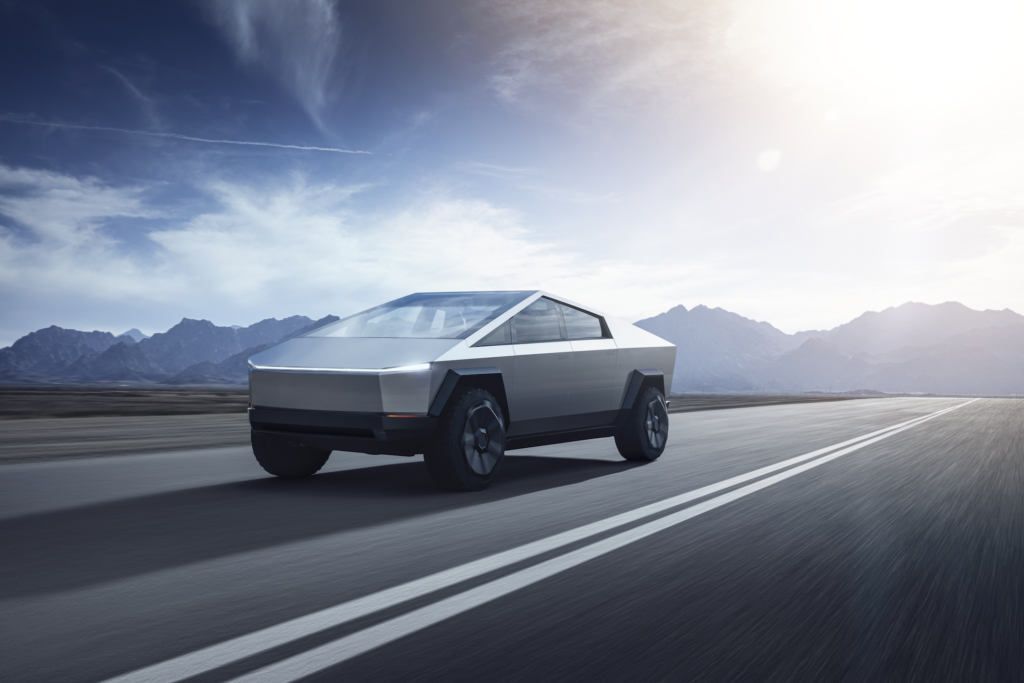
You can argue that a substantial portion of them are day-to-day light duty vehicles that see little to no action, but a significant segment of truck buyers use them to haul heavy car parts, farm equipemt, haul their race cars, livestock, bikes, boats, motorcycles and on and on. Some buyers need longer beds and a crew cab, while others don’t. The full-size Amrican pickup has been known to be among the most factory customizable vehicles on the market, and for good reason.
I personally know at least a few people who left the required $100 refundable deposit to order one, just because they wanted to say that they did. But a part of me thinks it was just a way for Musk to raise some quick, additional capital. The last I checked, there are over 200,000 “orders” for the truck right now. Assuming that everyone who left a deposit left the minimal $100, that’s over $20M for Musk’s car company. Sure, many of those will be canceled and he’ll be required to refund some of the cash, but I’m sure he also saw it as a way to boost his company’s stock value as well. Can’t blame him, it’s clever and crafty business.
There’s even been murmurs about the truck actually not looking anything like the concept when it hits production. If that’s the case, then what are people actually buying, then?
Spare me the false hype, the Blade Runner styling and all of the rest of it, and just give me a proper pickup with a tunable gas V8 or a turbo diesel engine, several cab and bed options, a full frame, and several trim and color scheme options. I need to haul my race car to an event six states away, I’m leaving right now and I have 12 hours to get there. I don’t have time for six or seven 45-minute charging lapses, three or four times between Point A to Point B.
Yes, I’ve Driven an Electric Vehicle
Now I’m not here to throw stones at electric cars, or the people that own them. I know quite a few Tesla owners — most of which are dyed-in-the-wool car people of great notoriety. But is a Tesla, or any electric car, for me? I’m not so sure. In recent weeks, I’ve had a go in my very first electric car, a Tesla Model S. It wasn’t the latest and greatest example being a 2015 P90D, but from its spec sheet, it serves as a pretty good benchmark.
For those unfamiliar, the 2015 Model S P90D cranked out 762hp; reportedly good for 10.90 quarter-mile times, a 0-60 sprint in about 3-seconds and a top speed, weirdly, of [only] 155mph. This was all possible with a 4700-lb. curb weight. Again, not the latest and greatest example of Model S performance (there’s a faster Ludicrous version, a P100D version, and a Ludicrous version of that, from what I understand), but certainly significant enough to get the point across.
I shot a quick video of me driving it, with the basics covered and some first-impressions — certainly not Oscar-worthy coverage, but enough to say that I had actually driven and experienced one.
Although I only had an hour with the car, at no point did I ever fall in love with it. I was impressed with the technology, performance and the overall driving experience, but I never felt a connection with it. It may sound odd to some of you reading this, but despite the immense power and speed, there was nothing there that made me want to run out and buy one — at all. The quirky features, or Easter eggs, like the option to put James Bond’s Lotus Espirit submarine on the screen, was cool, while others, like the touchscreen whoopie cushion icon I could have done without.
With the literal keyless entry, massive touchscreen for almost everything, including your climate control and stereo functions, and near complete silence of the car itself made me feel like I was essentially driving a  giant iPhone. I can see how techie individuals would covet the thing, but I just couldn’t. Maybe it was too quiet, or maybe the $130,000 sticker price of this particular model put me off — when you could get a Hellcat Widebody Challenger or Charger with similar performance (and a much higher top speed) for $50,000 less.
giant iPhone. I can see how techie individuals would covet the thing, but I just couldn’t. Maybe it was too quiet, or maybe the $130,000 sticker price of this particular model put me off — when you could get a Hellcat Widebody Challenger or Charger with similar performance (and a much higher top speed) for $50,000 less.
What Tesla had managed to do, successfully, was turn a performance sedan into an appliance, or just a giant piece of technology, in my eyes.
Yes, the Performance is There, But So What?
Now don’t get me wrong, I greatly appreciate the technology that’s gone into these cars, but to me, a car is special. OK, well maybe not all cars, but anything with that sort of performance should have much more personality than what Tesla offers. A car is supposed to be organic; mechanical, imperfect, slightly raw and temperamental. In essence it should almost be human, not flawless like a robot. I want to pop the hood, and admire the engine. I want to check the oil, install engine dress-up items and a larg[er] supercharger or turbo. I want to feel the heat emitting from the headers, and take in the sound it makes out of the exhaust at wide open throttle.
It doesn’t have to be the fastest thing on the planet, or run 10-second quarter-mile times — or even run in the 13s. In the past, I’ve fallen in love with some of the slowest cars on the planet. But I still want the ability to tinker with its engine to modify it, customize it, make it my own. Swap out different cylinder head and camshaft combinations, and adjust the tuning to get it all ‘just right.”
So what kind of effect will all of this have on hot-rodding in the future? If your average EV runs in the 10s or 11s in the quarter-mile, it may be safe to say that the modifications of new cars will certainly take a hit in the aftermarket — at least if you look at what the casual enthusiast would do. I personally know many car owners who aren’t really car guys, but have purchased something mildly respectable, and wanted to personalize it with one or two touches such as an exhaust, a cold-air kit or a hand-held tuner — just to give it more sound and a bit more performance.
At the moment, there’s very little you can do to modify one of these electric cars. Sure, you can gut the interior to save weight, mount drag radials to further improve the AWD grip, and even install lowering springs and sway bars from companies like Eibach. The aftermarket is currently doing everything they can, with both Holley and AEM Electronics slowly getting into the game. Holley is already backing Don Garlits’ EV drag car, and AEM is developing new hardware (and software) for electric vehicles.
But the aftermarket still isn’t quite there yet, and Tesla gives anyone a hard time for needing so much as replacement parts — they’d much prefer you wait around and allow them to provide you with 2% and 5% performance increases every so often, via software tuning. To me, if I buy a car it should be up to me what I can do with it, warranty notwithstanding.
On the flip side, we’re already seeing E-swapped hot rods and muscle cars, with Chevrolet Performance teasing an E-motor at SEMA 2019 and having one nestled inside the engine bay of an early C10 pickup. Other car builders have been doing the same, with swapping in electric motors from wrecked Teslas into classic Mustangs and older vehicles. While it’s too soon to say where the industry will go, for certain, over the course of the next decade, it’s safe to say that it’s going to change.
In the meantime, the future of online automotive magazines will also remain in limbo over the course of the next decade, as car buyer’s future interest will remain a mystery, and younger car buyers enter the market. GEN-Z has grown up with ever-evolving tech, including smartphones, practically from birth. Will they prefer an iPhone on wheels, or would they rather escape to something more “traditional,” and “organic.” After all, hipster Millennials are now scooping up old vinyl records and VHS tapes out of irony, but mostly as a fad. Will they stick with the analog trend, or will they eventually go back to digital? Time will tell.
For me, I’ll stick with my archaic, old mechanical dinosaurs. They have more soul.

Rick Seitz is the owner and founder of AutoCentric Media, and has a true love and passion for all vehicles; GM, Ford, Dodge, imports, trucks — you name it! When he isn’t clacking away on his keyboard, he’s building, tuning, driving or testing his current crop of personal projects!

